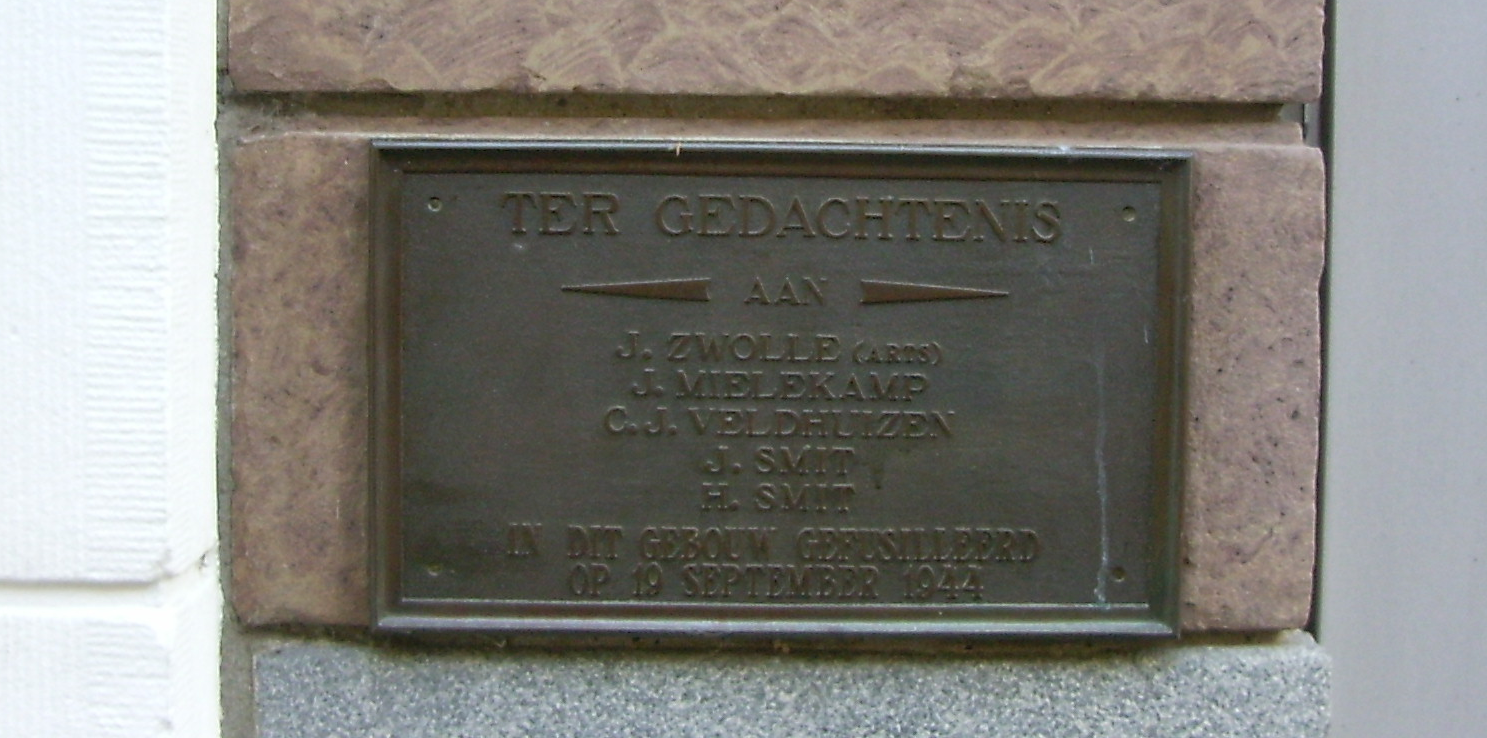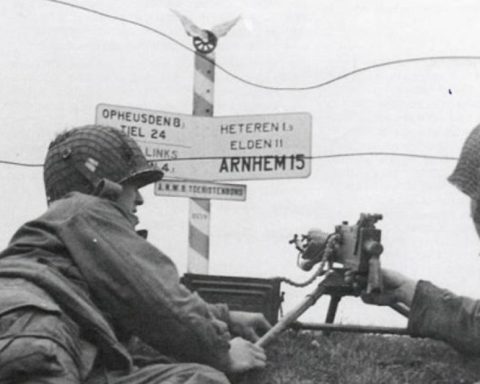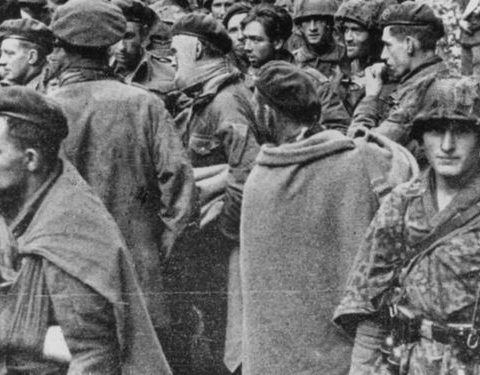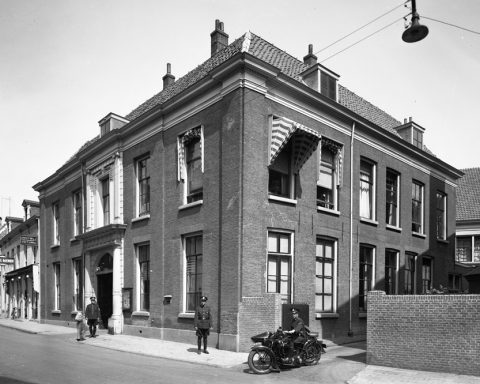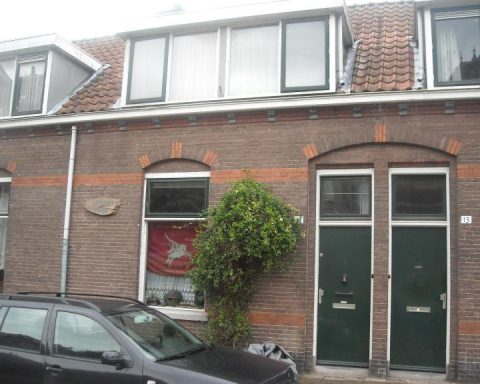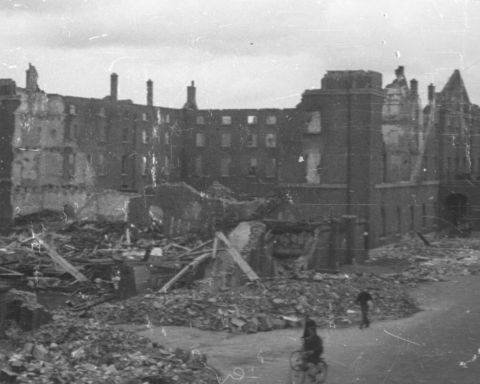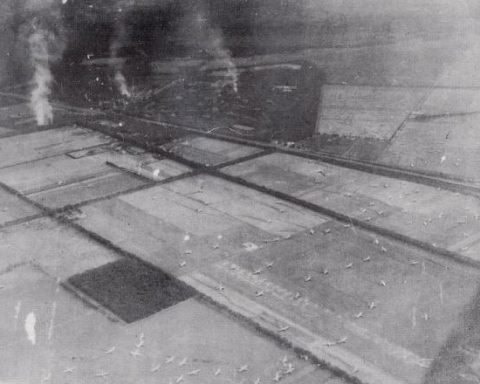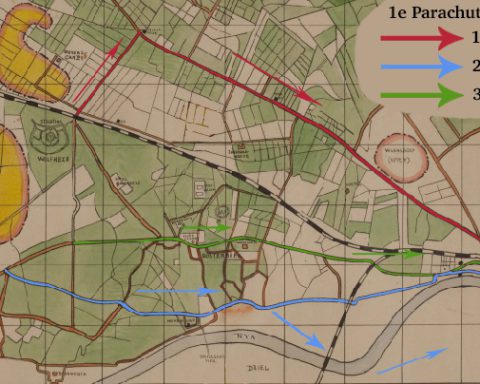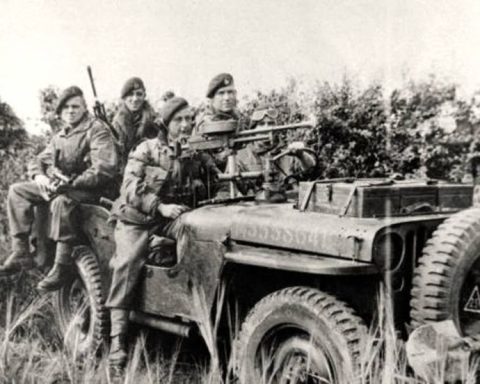A simple plaque in Bakkerstraat commemorates the murder of five innocent Arnhem residents during the Battle of Arnhem. Few people know the story behind the execution by German troops on the morning of Tuesday, September 19, 1944.
Due to the chaos during the Battle of Arnhem, it was never completely clear what exactly happened. But in broad terms the story can now be reconstructed.
Wounded paratroopers
The story begins on the evening of Sunday, September 17, 1944. The 1st British Airborne Division landed at Wolfheze that afternoon and around eight o’clock in the evening John Frost’s battalion with approximately 700 soldiers reached the north side via the Onderlangs and the Rijnkade. of the Rhine Bridge.
The situation in the city center of Arnhem is unclear at that time. Shots are fired between groups of English and German soldiers in various places in the center. Two British soldiers are injured in one of these battles. Arnhem residents bring them to the domestic science school on the Rijnkade.
One of these injured is 30-year-old Corporal Arthur Maybury of the 89th Parachute Field Security Section, the airborne division’s intelligence unit. It is unknown who the other wounded soldier is.
During the night of September 17 to 18, Corporal Maybury died. Arnhem doctor Jan Zwolle finds a list of names of Arnhem NSB members in Maybury’s pockets. The 89th Parachute Field Security Section was tasked with arresting these people after the liberation of Arnhem. The doctor puts the list of names in his pocket. Maybury gets a field grave in the garden of the domestic science school.
In the early morning of Tuesday, September 19, the domestic science school on the Rijnkade was located between two front lines. On the east side there is heavy fighting between the Germans and the British who are occupying the Rhine bridge. On the west side, the British are trying to force a breakthrough towards the bridge via the Utrechtseweg and the Onderlangs. The British arrive at the harbor at the Oude Kraan.
Van Gend en Loos
It was at that moment that German troops occupied the domestic school. The twelve people present in the building at that time will most likely be instructed by the Germans to take the injured British paratrooper to the hospital.
The injured Briton is placed on a moving stretcher and the procession moves through the city center in the direction of the municipal hospital. At the Van Gend en Loos building in Bakkerstraat, the group is stopped by a group of German soldiers.
It has never been clarified which unit these Germans belonged to. Most likely they did not belong to the 9th or 10th SS armored division, but were ‘regular’ German troops stationed in Arnhem.
Director Dijkland of Van Gend en Loos sees 12 people standing with their hands in the air from the window. They are searched by the Germans. Shortly afterwards, seven of them are taken away in a car. Five of them stay behind. During the search of doctor Zwolle, the list with the names of Arnhem NSB members is found.
Director Dijkland: “My son apparently saw someone he knew among those five people and went over and spoke to one of the people, at which point the five people were driven inside.”
It is clear to the Germans. These are terrorists.
Director Dijkland: “The five people were simply placed against the wall and shot dead. My son, who was standing outside the depot and heard many more shots, thought his entire family had also been shot.”
It is not known what happened to the wounded English soldier.
Buried
The story that German soldiers shot innocent Dutch civilians is spreading like wildfire through the city. Wilhelmina Schouten is known to one of the victims. A day later, on Wednesday September 20, she makes an attempt to identify the victims. However, a large part of the city center was closed by the Germans due to the fighting at the bridge.
Schouten: “My first attempt to enter Bakkerstraat failed. The next guard relented when I said that I wanted to know whether I was a brother of the five hinted Niederländer; that it had already been gone for 4 days. He took me to Van Gend en Loos. There I heard that the five Lower Länder had already been buried.”
According to the German soldier, the Dutch were terrorists: “Der Arzt hatte Munition und sie haben mit Engländern zeeammengehockt.”
It later became clear that the Germans picked two passers-by off the street in Bakkerstraat and instructed them to bury the five executed Dutchmen in the garden of Van Gend en Loos.
A note was hung on the wall of Van Gend en Loos.

The text on the note reads:
Against this wall, 5 citizens of Arnhem were shot dead on September 19, 1944.
1 Mielekamp Air Protection Service
2 Smit Electrician NS
3 Smit Accountant
4 Veldhuizen caretaker Industrial School
5 J v Zwolle doctor.
After the war, the five executed Arnhem residents were reburied. On September 19, 1969, 25 years after the incident, a plaque was unveiled in Bakkerstraat in memory of the five civilians shot dead.
When the Van Gend en Loos building was demolished in the early 1980s, part of the original wall was retained. After the new construction, the plaque returned there in 1984.

